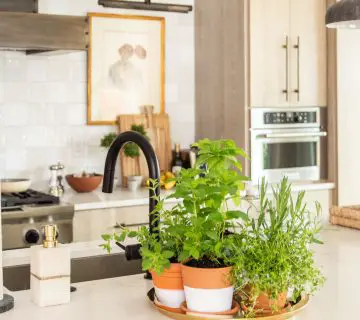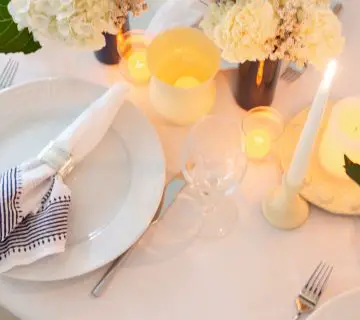With so many different furniture makeover ideas available online, it can be difficult to decide which style to go with or which products won’t break the bank. This article will cover the 8 best DIY furniture painting ideas for choosing the ideal technique for a stunning and long-lasting finish and the ideal color and appearance. All you need is a passion for DIY stuff! Let’s get started.
The Preparation
Painting old furniture is much more than just slathering a new coat of paint. You need to prepare the surface to get the glazed and long-lasting finish that you’re looking for. Here are a few steps to do before you put on any paint.
- Remove Any Old Paint
Always remove any old paint. Think it’s hard? Not at all! All you need is a scraper tool. Holding the scraper parallel to the surface and using steady pressure can help you remove any loose paint while being cautious not to damage the surface.
If you have a surface made of fabric, how to remove paint from clothes will depend on the type of paint used. Water-based paints are easier to remove than oil-based ones. Scrape as much paint as possible, then wash the fabric with warm water and detergent. Most of the paint should be gone after this.
- Sand and Fill
After scraping off the old paint, it’s time to do some sanding. This is important because this will give you a smooth canvas to paint on. Don’t overlook crevices. If your furniture is made of wood and has a crack or hole, you can easily fill it up with some wood putty which can be found at any tool store.
- Prime
To ensure clean, equal application, use a spray primer. For uniform coverage, use a white primer underneath light-colored paint and a deeper primer under darker-colored paint. starting with the chair’s base. To prevent drips and overspray, spray gradually for a constant pattern. Utilize a back-and-forth motion that follows the furniture’s contours. Paint two or three coats of the primer and allow some time between each layer so that it can dry completely. Drying times can vary greatly, so read the label on your primer.
Time to Paint
Now that your furniture surface is ready let’s start with the fun part- painting! There are different methods you can use to paint your furniture. Here are some of the options.
- The Pour-on Method
This method gives surfaces the popular marble effect. Pick colors of your choice (not more than two to three) and pour them separately into cups. If the paints look too thick, you can always add thinner or even water if you are using acrylic. Then just pour on! Drizzle one color over the over, make some swirls with a small wooden stick, and voila!
- A Color Wash
Want that vintage-looking makeover for your furniture? The color wash method is what you need. Simply pick a color and add enough water to make it runny. This method gives a washed-off effect, so you want your paint to be light and almost translucent. You can add layers of paint depending on the transparency that you want.
- The Boat-Effect
This looks great on wooden furniture, but not limited to it. Apply a base color, then when it dries, paint two or three colors with a striped pattern that is a shade or two darker or lighter than the base color. This gives the wooden plank effect that appears on boats and looks phenomenal.
- Decoupage
Decoupage, a technique that combines paint methods with colored paper cutouts, can enhance even the most unremarkable items. Nowadays, you can get around this by purchasing ready-to-use ornamental paper designed for this use. See how to convert a once-blah bookcase with teal chalkboard paint and lovely butterflies placed in a clever arrangement inside.
- Good Ol’ Spray Paint
If you want to update the wooden chairs in your room but find it intimidating to use a brush on all those delicate contours, just use spray paint. It will apply faster and more evenly with the proper technique than you would be able to with a brush. Use enamel, a fast-drying finish good for cabinets, trim, and furniture, for a long-lasting, durable finish.
- The Distressed Effect
Children will be children, which can be hard on their bedroom furnishings. It makes perfect sense to give a damaged look to their wooden bed frames intentionally! After painting, scrape and sand in a few random spots, and then apply wax to seal.
- The Memphis Milano Effect
If you love bright colors, this is just perfect for you. Paint your furniture in bright neon colors to make a statement. Have dull walls? Not a problem when you have this beautiful vibrant furniture to make up for it.
- Painting Upholstered Furniture
Do you have a patterned upholstered chair? A trendy monochrome change can be achieved using paint. The secret is to spray the upholstery with water to aid paint adhesion thoroughly. Using a small brush, make sure to get into every crevice and lightly sand in between coats. A minimum of three coats will be necessary to cover the design completely, and more if switching from a dark tone to a light one. If you want patterns, you can easily find stencils that you can put on after your monochrome painting is complete and painted over.
Conclusion
With creative painting techniques, you can easily produce very dramatic effects while also coming up with a cohesive design, connecting several rooms, and even carrying the theme, pattern, or color scheme from the painted furniture ideas onto other furniture pieces, fixtures, and fittings. With our 8 best DIY furniture painting ideas, give your old furniture a brand new look!


